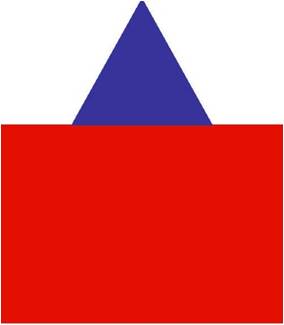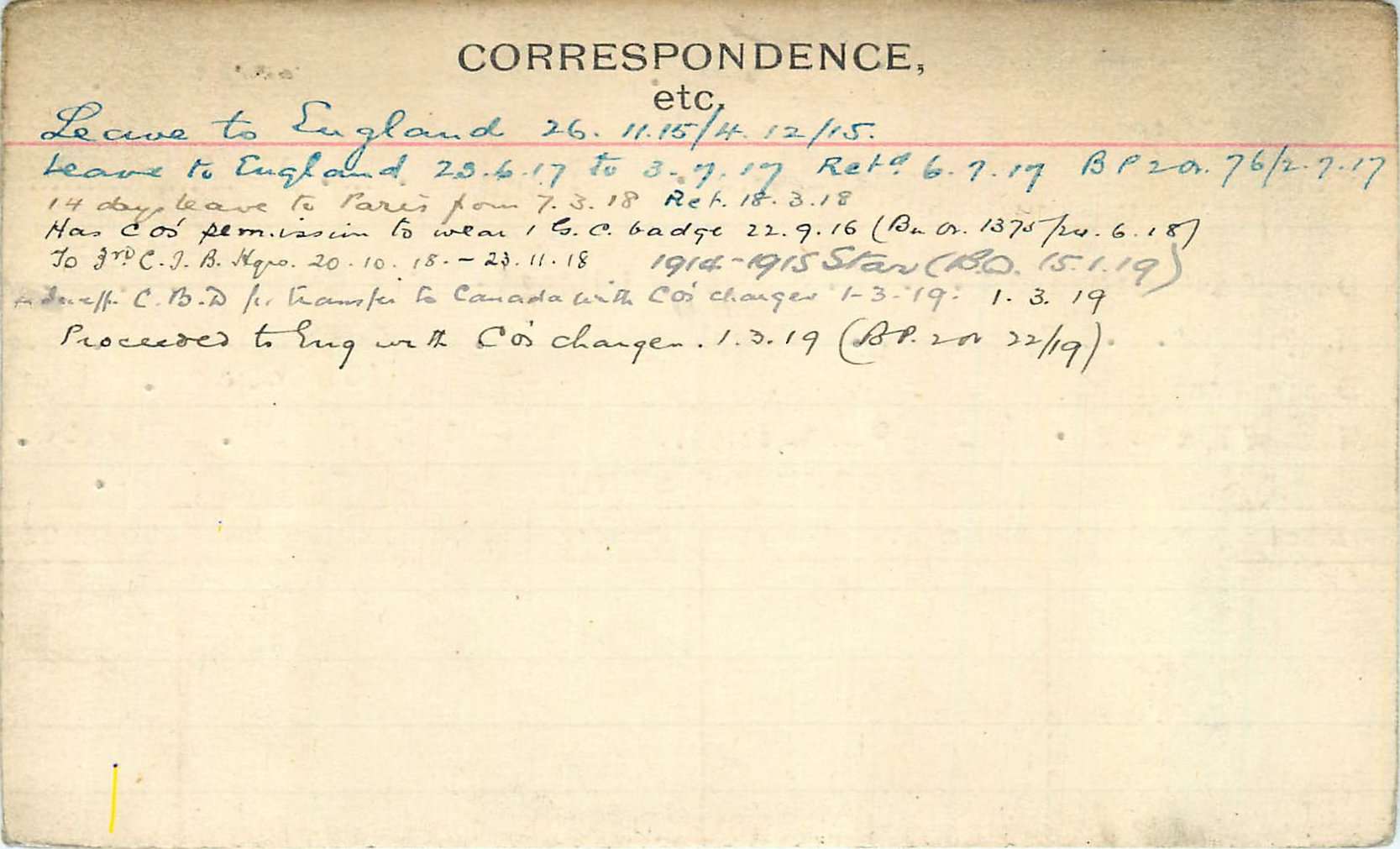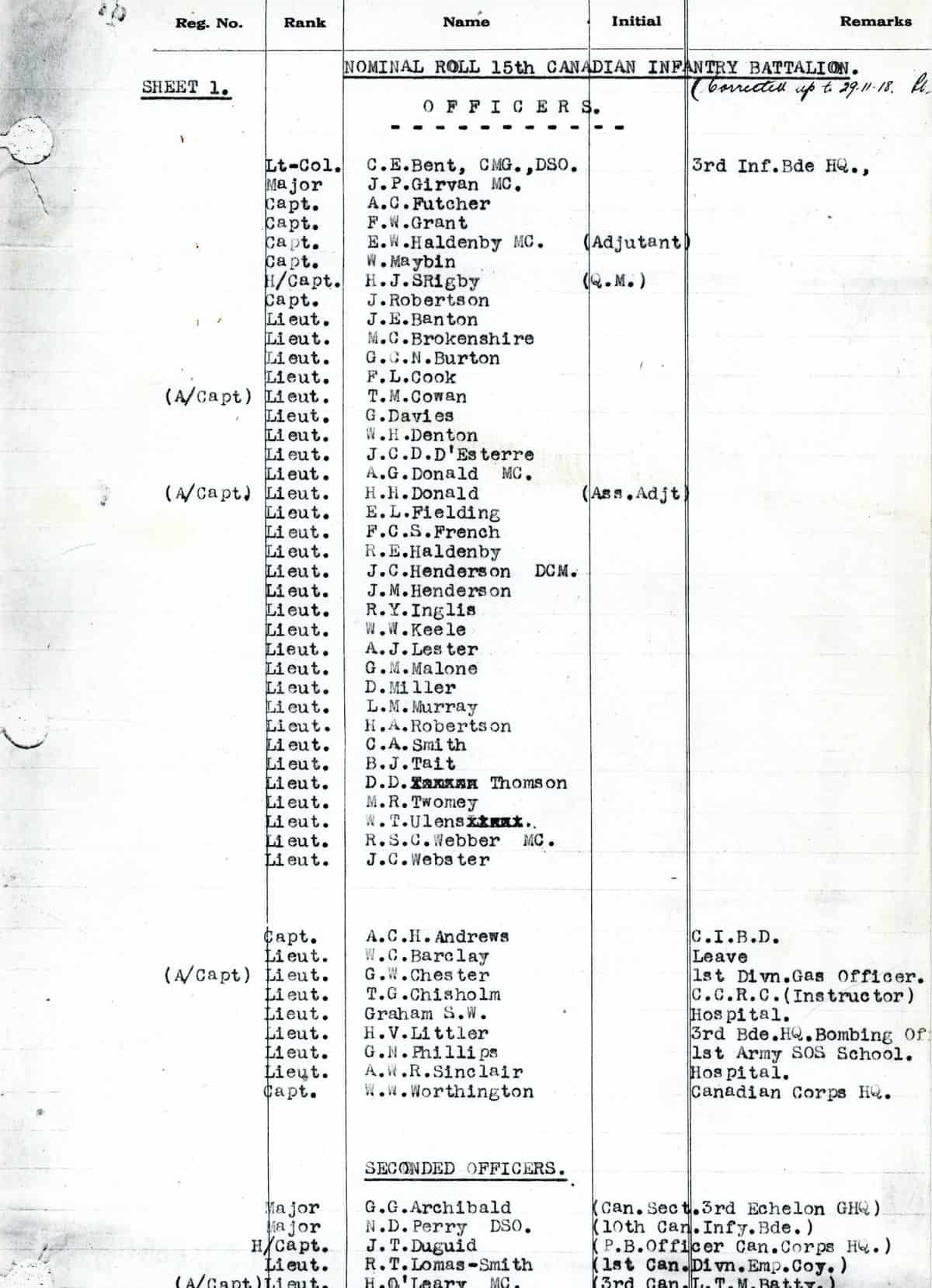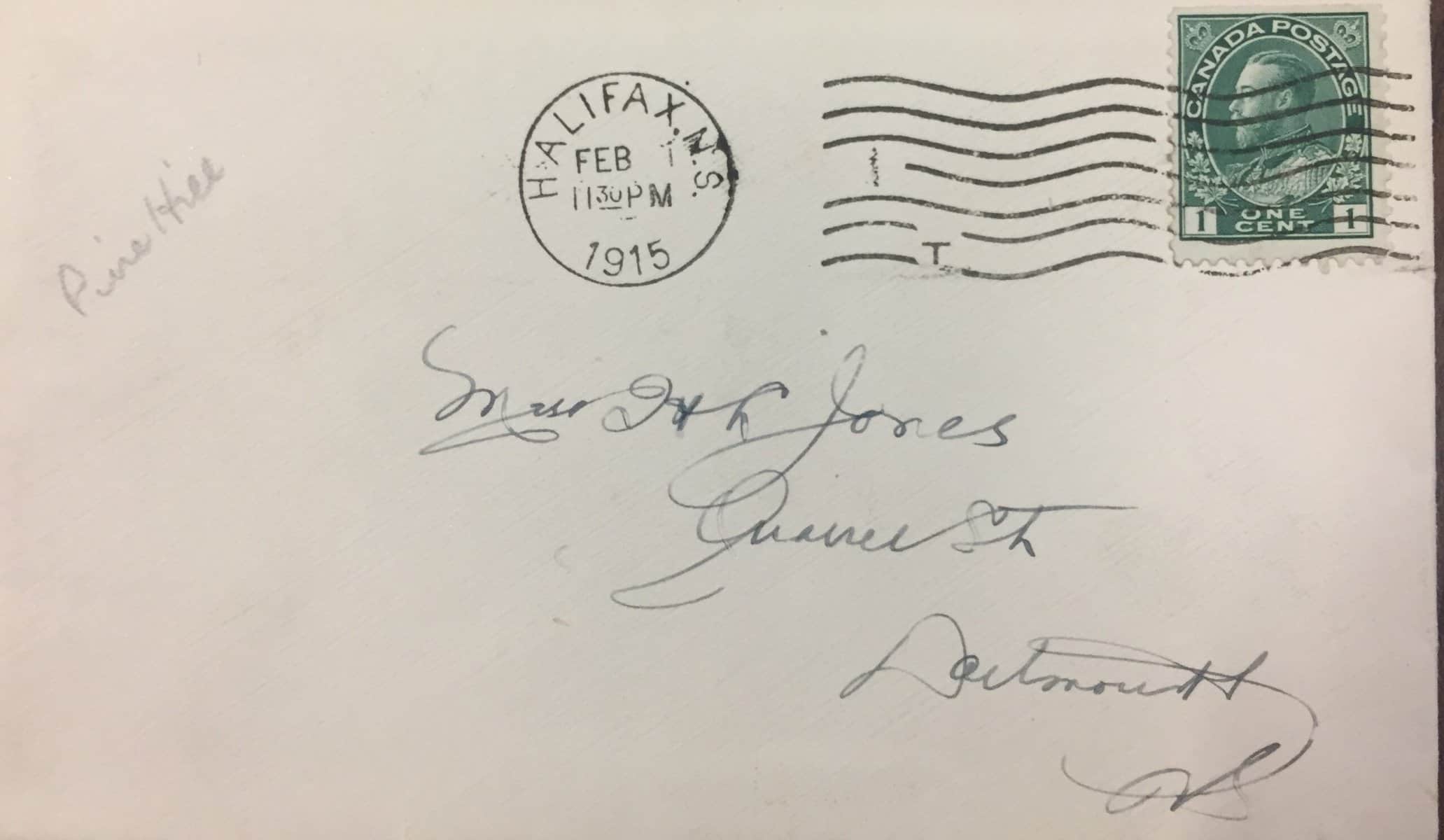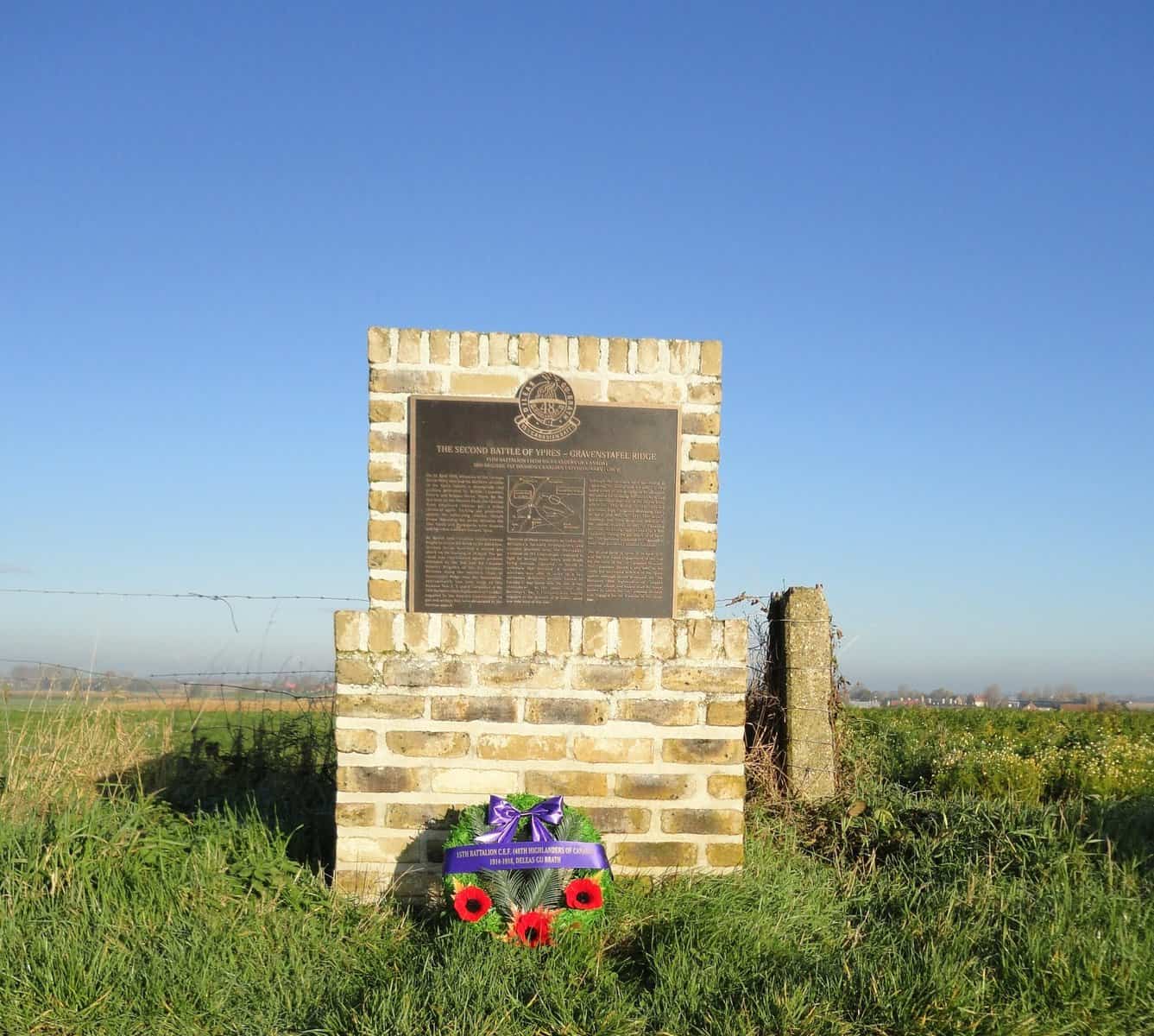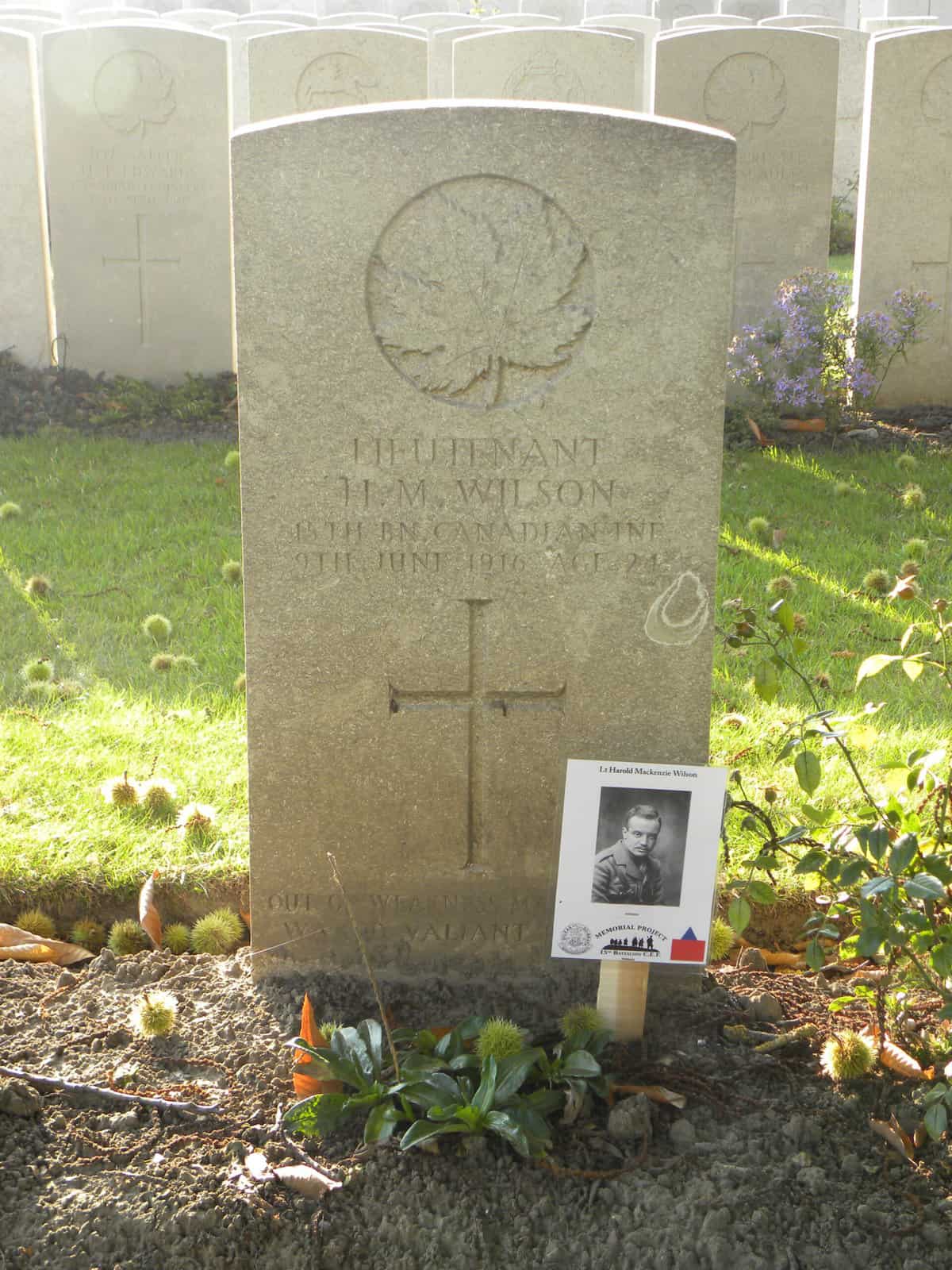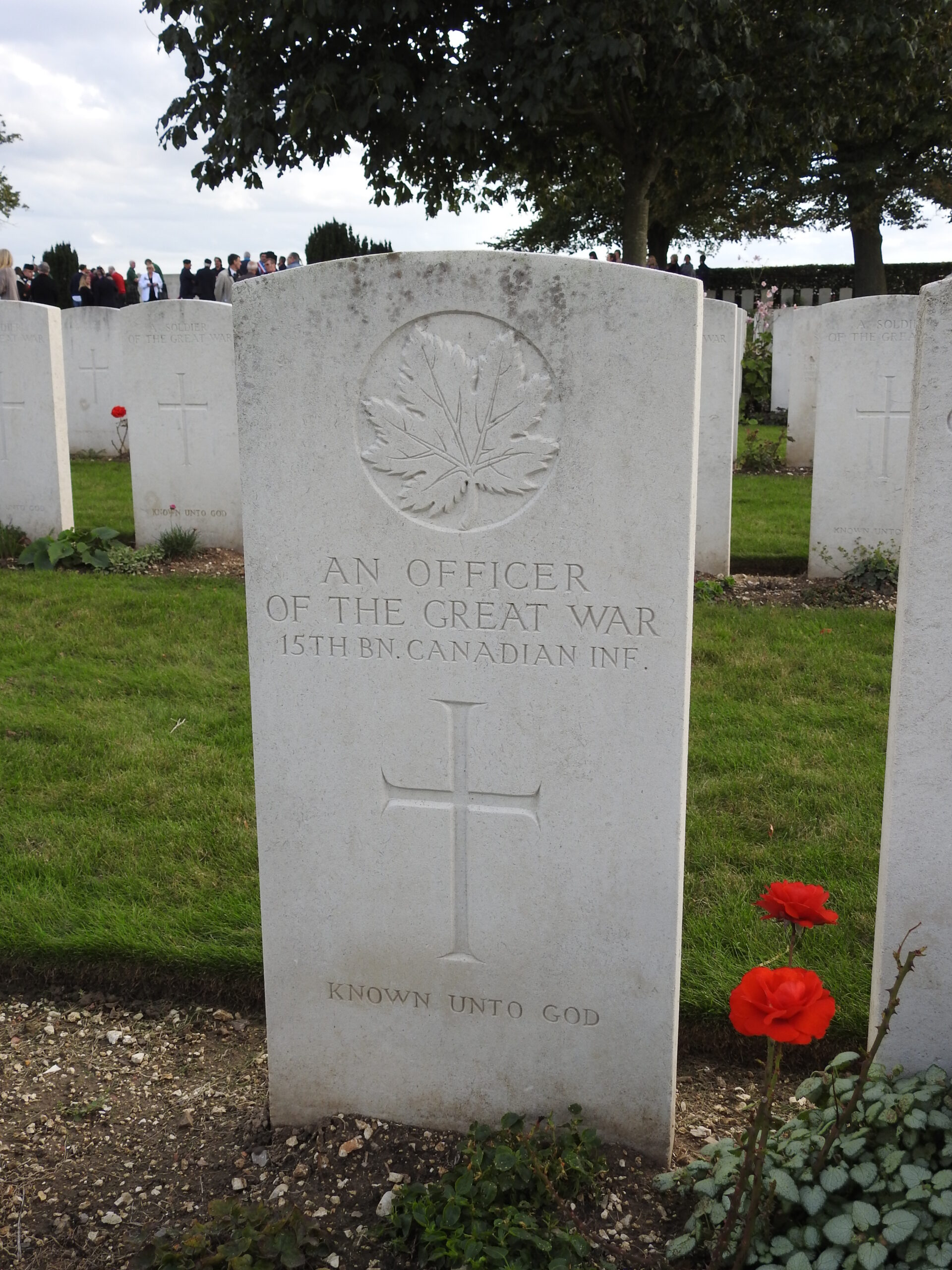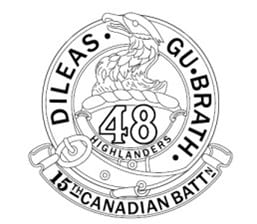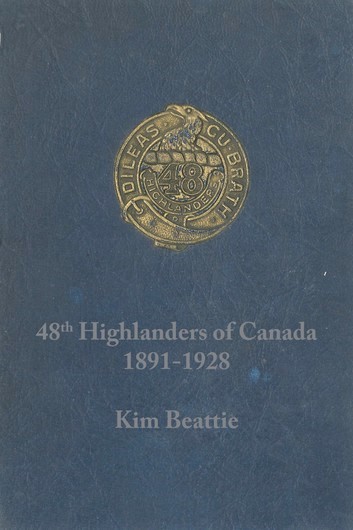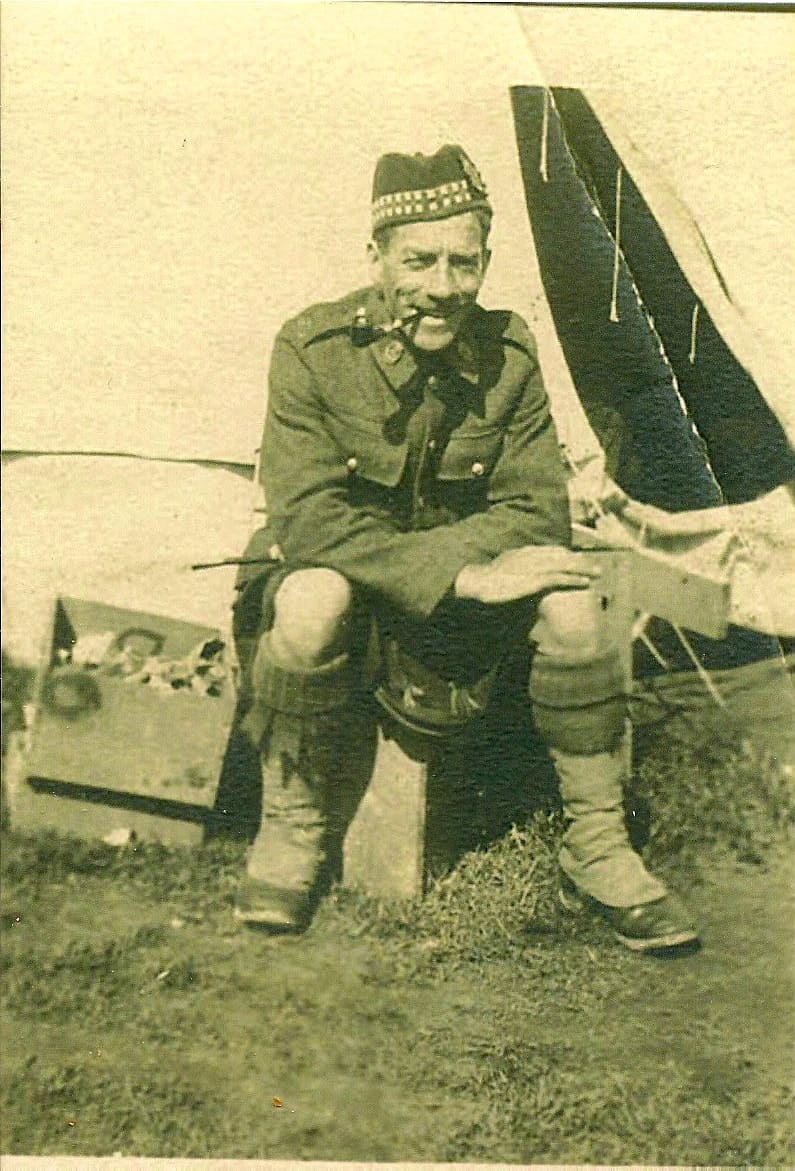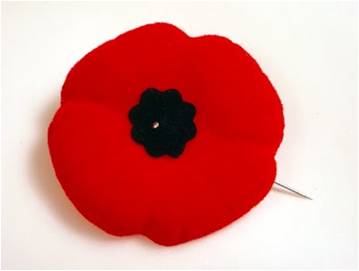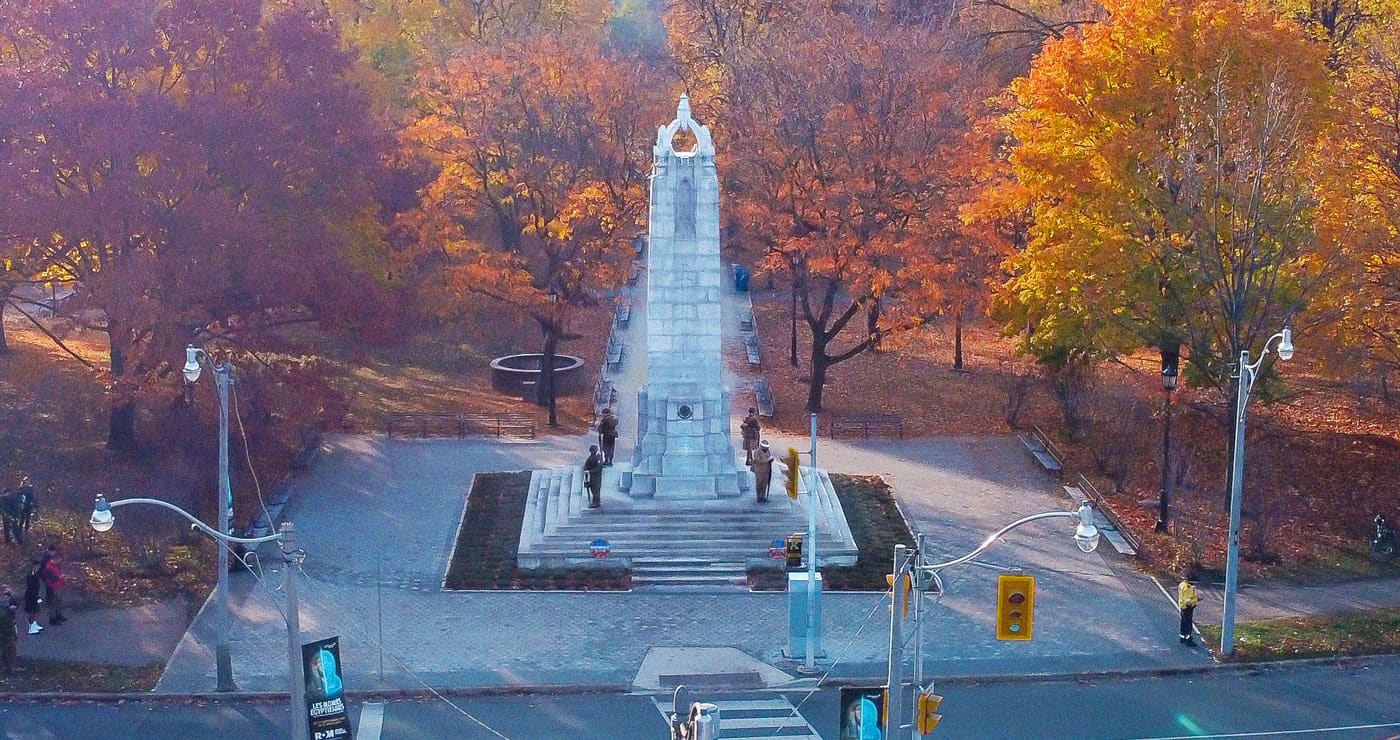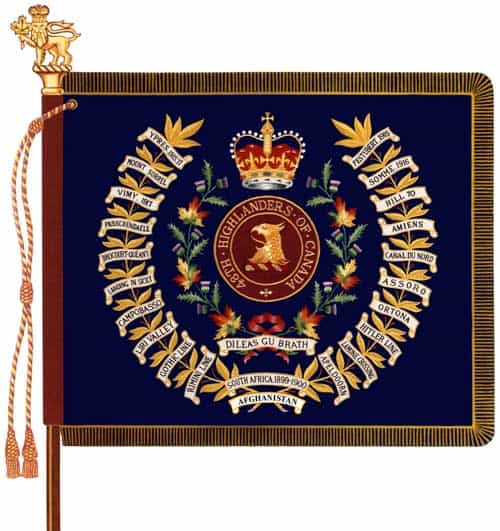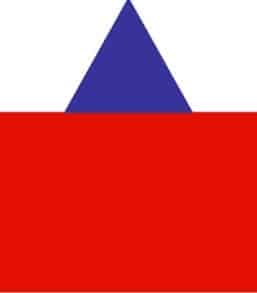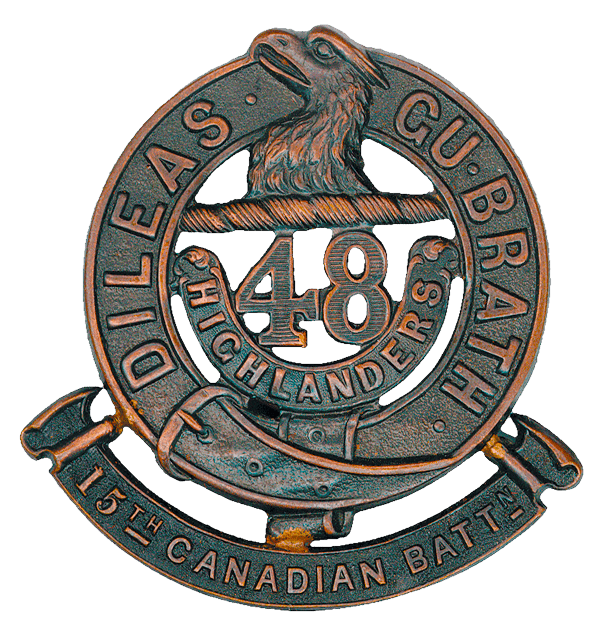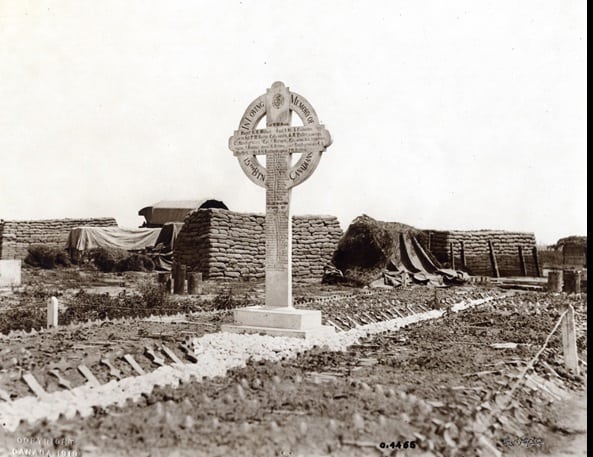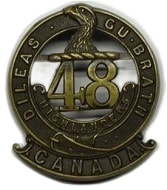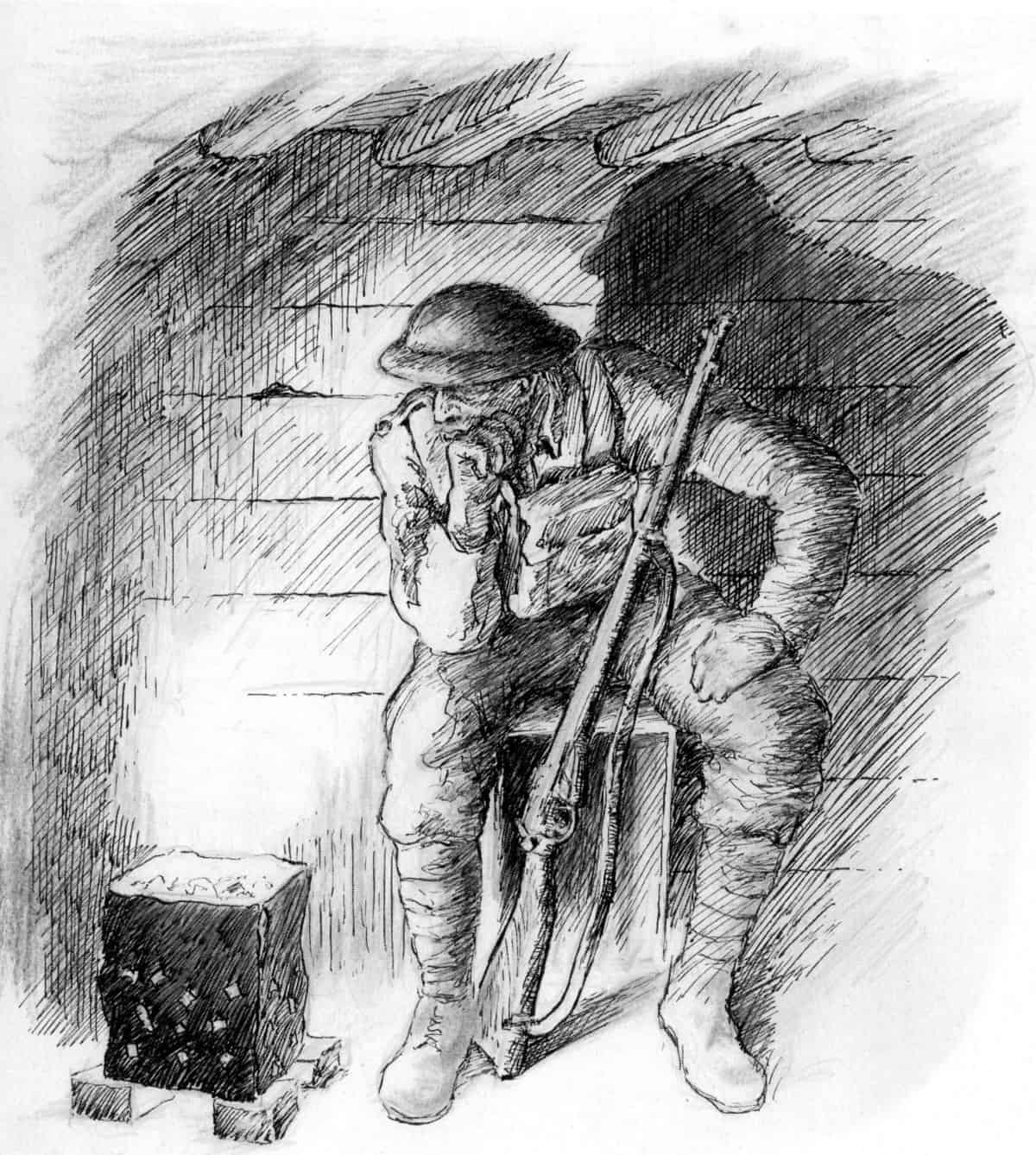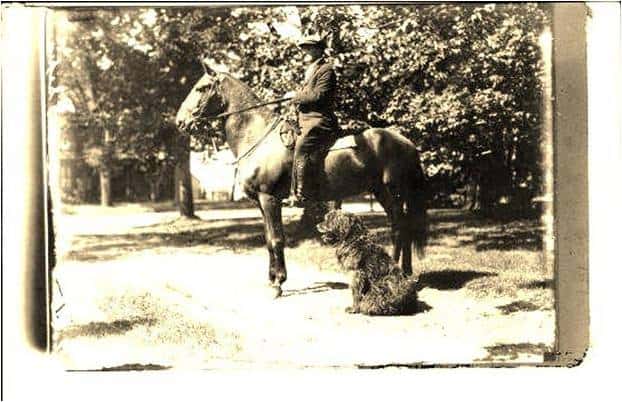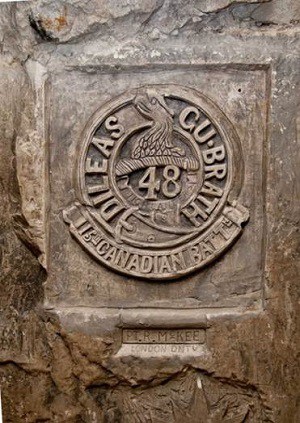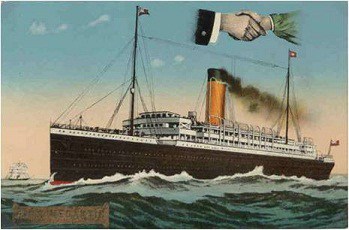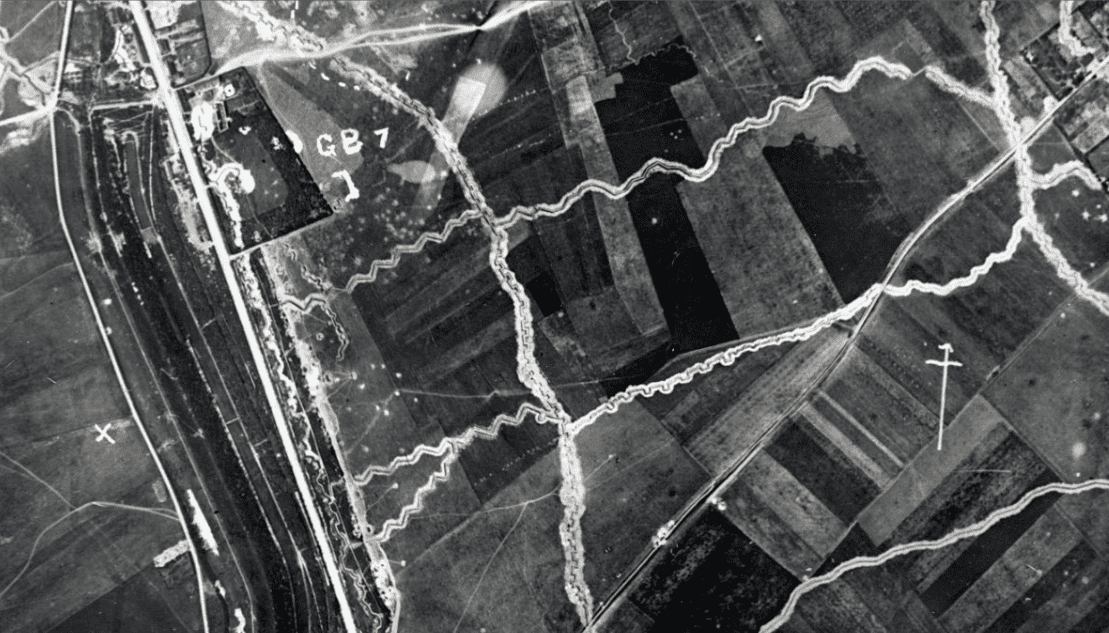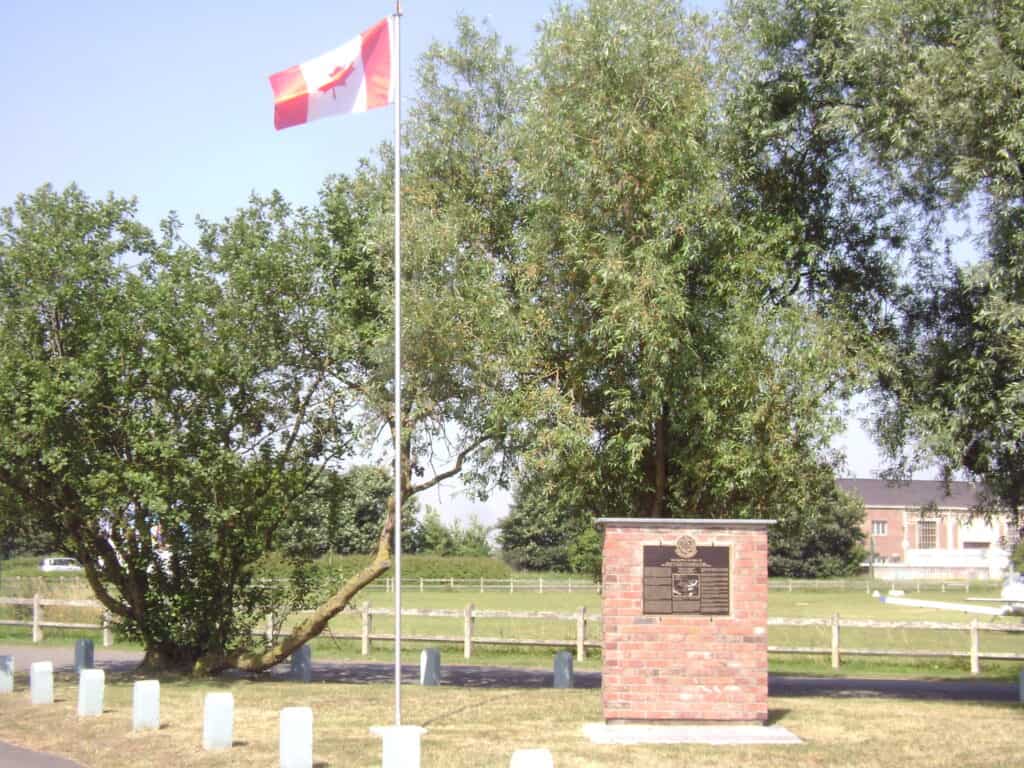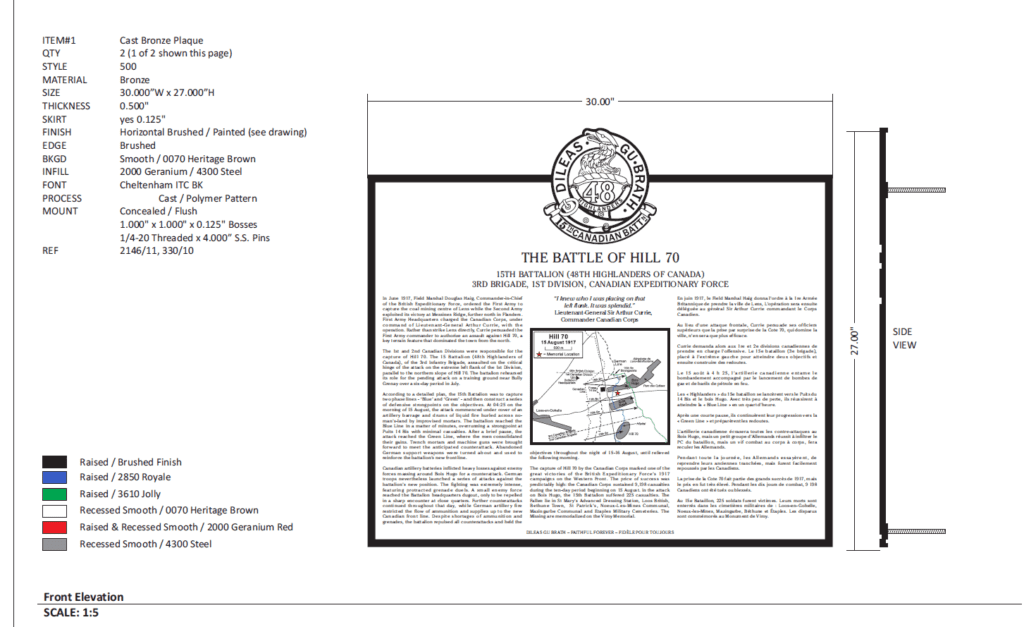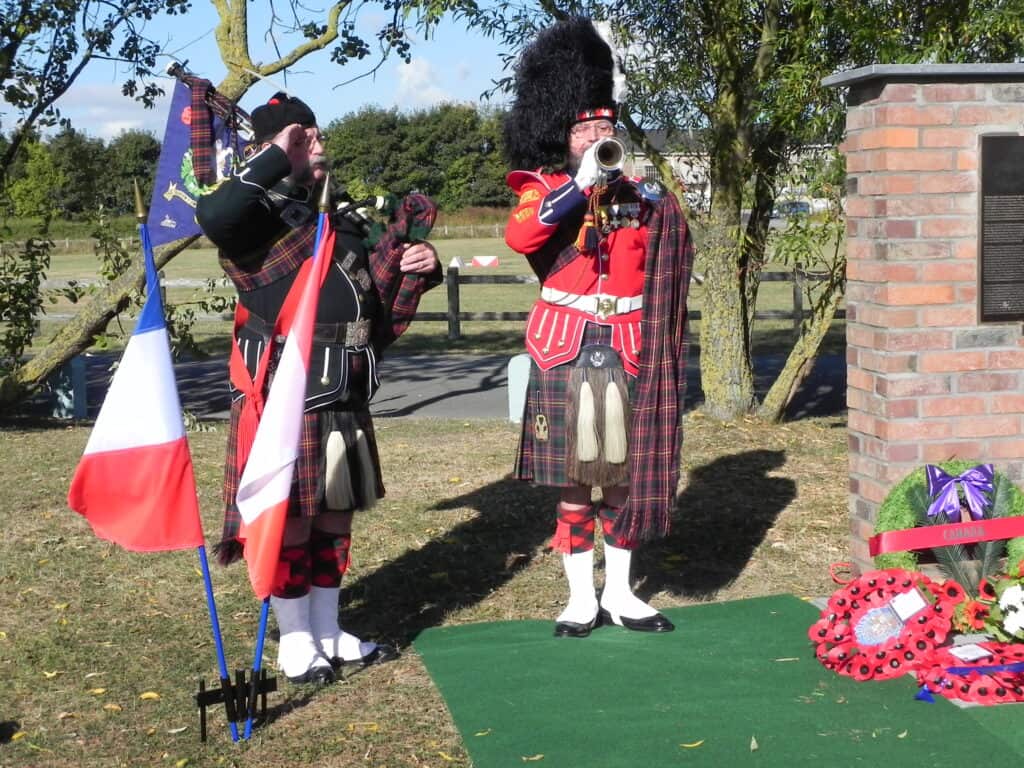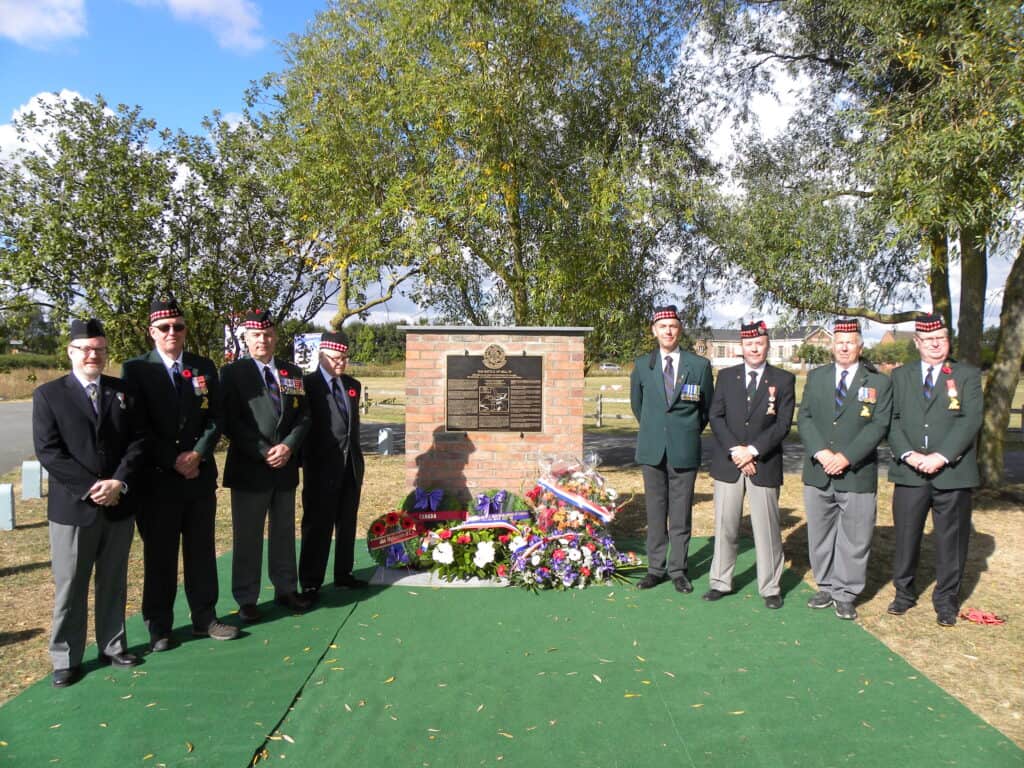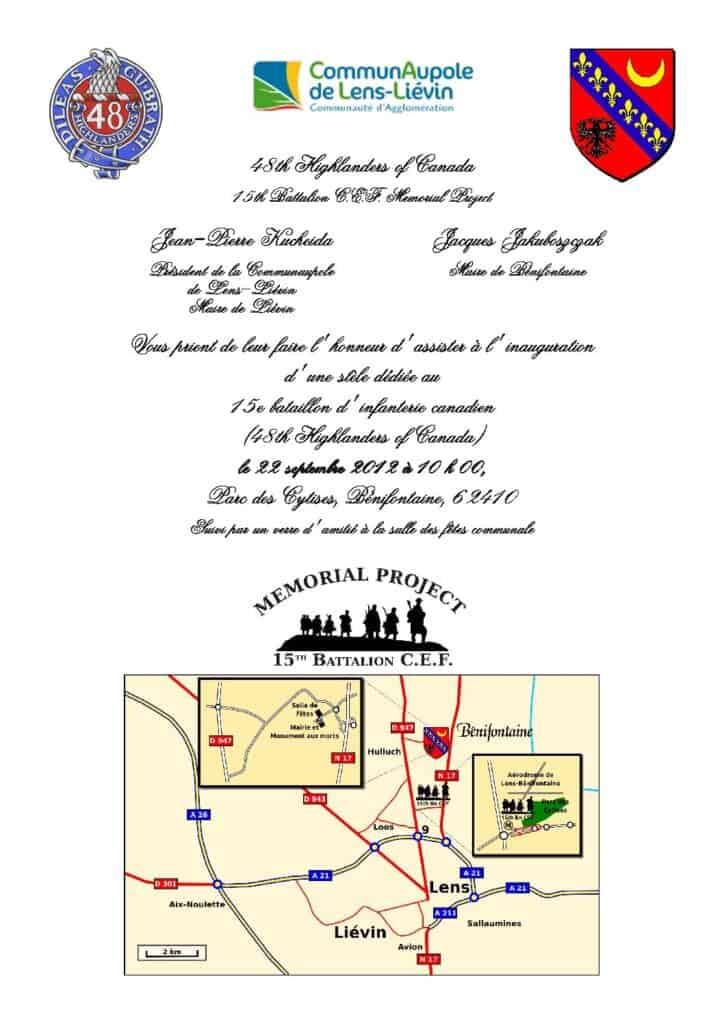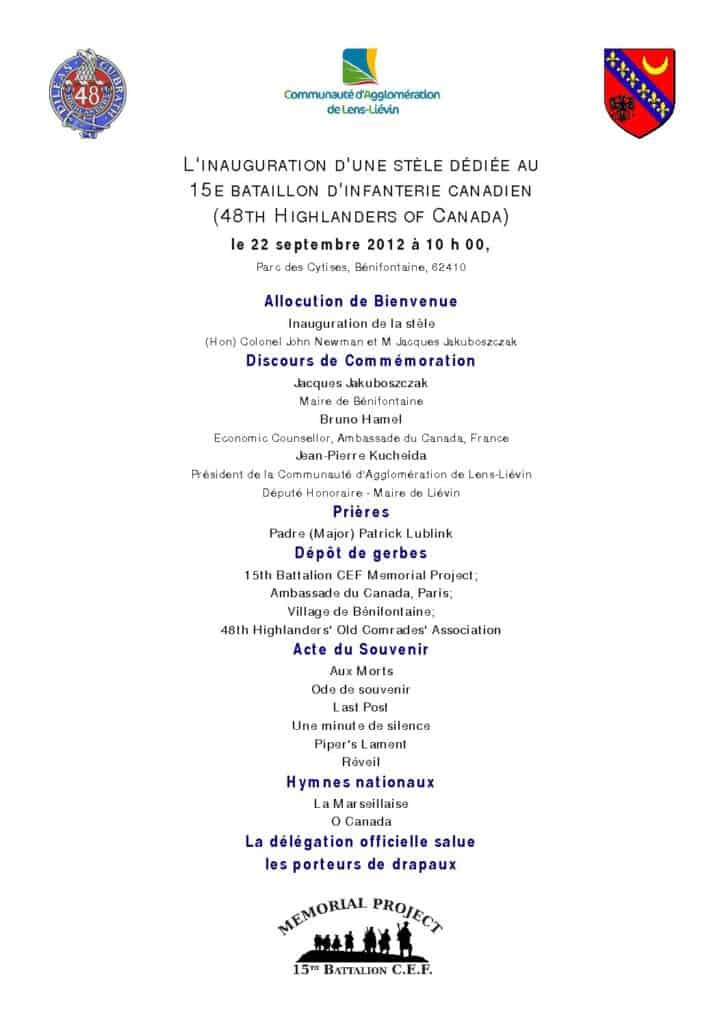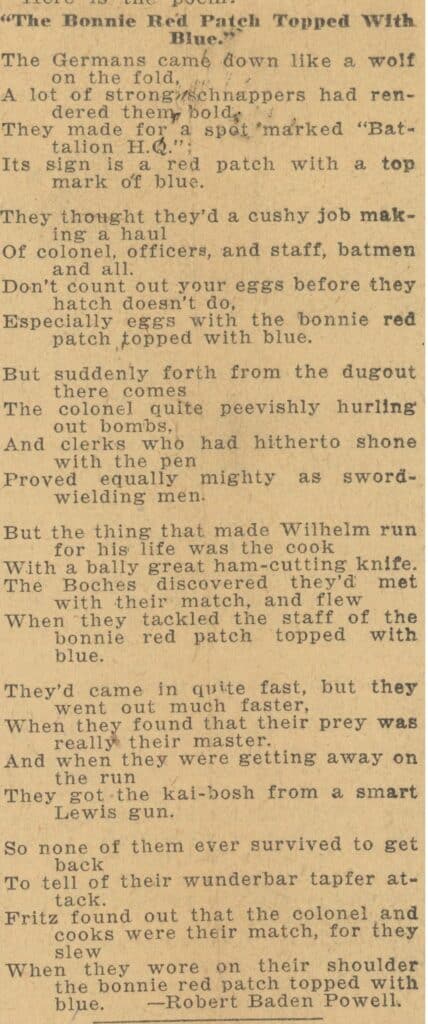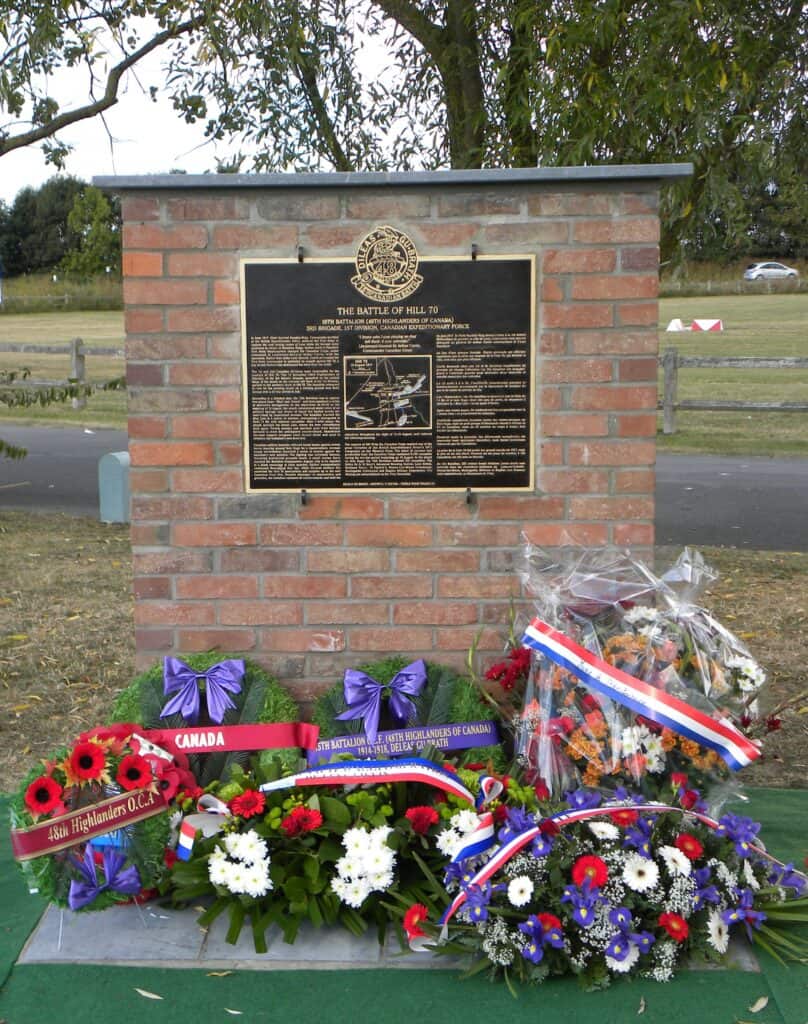In June 1917, Field Marshal Douglas Haig, Commander-in-Chief of the British Expeditionary Force, ordered the First Army to capture the coal mining centre of Lens while the Second Army exploited its victory at Messines Ridge, further north in Flanders. First Army Headquarters charged the Canadian Corps, under command of Lieutenant-General Arthur Currie, with the operation. Rather than strike Lens directly, Currie persuaded the First Army commander to authorize an assault against Hill 70, a key terrain feature that dominated the town from the north.
The 1st and 2nd Canadian Divisions were responsible for the capture of Hill 70. The 15 Battalion (48th Highlanders of Canada), of the 3rd Infantry Brigade, assaulted on the critical hinge of the attack on the extreme left flank of the 1st Division, parallel to the northern slope of Hill 70. The battalion rehearsed its role for the pending attack on a training ground near Bully Grenay over a six-day period in July.
According to a detailed plan, the 15th Battalion was to capture two phase lines – ‘Blue’ and ‘Green’ – and then construct a series of defensive strongpoints on the objectives. At 04:25 on the morning of August 15, the attack commenced under cover of an artillery barrage and drums of liquid fire hurled across no-man’s-land by improvised mortars. The battalion reached the Blue Line in a matter of minutes, overrunning a strongpoint at Puits 14 Bis with minimal casualties. After a brief pause, the attack reached the Green Line, where the men consolidated their gains. Trench mortars and machine guns were brought forward to meet the anticipated counterattack. Abandoned German support weapons were turned about and used to reinforce the new battalion’s new front line.
Canadian artillery batteries inflicted heavy losses against enemy forces massing around Bois Hugo for a counterattack. German troops nevertheless launched a series of attacks against the battalion’s new position. The fighting was extremely intense, featuring protracted grenade duels. A small enemy force reached the Battalion headquarters dugout, only to be repelled in a sharp encounter at close quarters. Further counterattacks continued throughout that day, while German artillery fire restricted the flow of ammunition and supplies up to the new Canadian front line. Despite shortages of ammunition and grenades, the battalion repulsed all counterattacks and held the objectives throughout the night of August 15-16, until relieved the following morning.
The capture of Hill 70 by the Canadian Corps marked one of the great victories of the British Expeditionary Force’s 1917 campaigns on the Western Front. The price of success was predictably high: the Canadian Corps sustained 9,198 casualties during the ten-day period beginning on August 15. In the attack on Bois Hugo, the 15th Battalion suffered 225 casualties. The Fallen lie in St Mary’s Advanced Dressing Station, Loos British, Bethune Town, St Patrick’s, Noeux-Les-Mines Communal, Mazingarbe Communal and Etaples Military Cemeteries. The Missing are memorialized on the Vimy Memorial.

